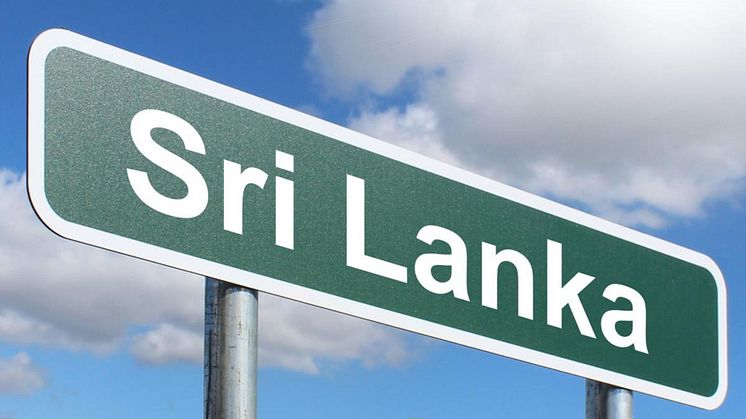
Blog post -
Jungle Jamborees and Tuk-Tuk Tales: A Wild Ride on Sri Lanka’s Roads by IAM RoadSmart member Christopher Hill.
I am afraid I am a bit of a dinosaur, having passed my advanced motorcycle test back around 1988, when “Can My Safety Be Guaranteed Always?” was permanently implanted and is still my mantra. I also have a hang-up from being assessed for a driving job in London when the potential employer pointed out to me, “You can’t stop or steer with a horn” (so don’t use it much). Leaving that aside, earlier this year I visited Sri Lanka and, after being driven around the South Asian island, thought I’d share my experience.
Priority of Road Users
Priority generally depends on the size of vehicles and sentient beings, so, in order of seniority: elephants, water buffalo, cows, ground or water monitor lizards, mongooses, buses, lorries, smaller delivery vehicles down to Ford Transit size, tourist minibuses, cars, tuk tuks, scooters, and pedestrians. Monkeys keep out of the way. Dogs deserve a separate mention. They have perfect road sense. Generally found sleeping or going about their affairs on roadside verges, but occasionally sleeping on the road or crossing it. A single toot on the horn will clear them out of the way. Pedestrians crossing or walking along the side of the carriageway may be warned in the same way (but see reference to them in the At Night section).
On the road
There are a few motorways, largely financed by Chinese money, but without quite the restrictions on use imposed here, though with the occasional speed check. They are much quieter, and unless you are tooted at by an approaching overtaking vehicle, you may stay straddling the centre line of two lanes. What we would call “A” roads are well surfaced and would put our own to extreme shame. Village side roads or safari park roads will be unsurfaced, but people do seem to care for their vehicles and reduce speed accordingly.
Overtaking and passing when meeting oncoming traffic.
Drive as close as possible to the rear offside corner of the vehicle in front. Overtaking may then be carried out on or approaching a bend or on a straight road when something is coming the other way. If it is a larger vehicle higher up the priority list, you hope to be through the sandwich before making contact. (Occasionally in this manoeuvre, discretion is the soul of valour, and you must brake and retreat.) If it is a smaller approaching vehicle, it has a duty to move out of the way, including on to the verge if necessary. A single toot of the horn signifies your presence, but toot only when you are alongside and when close to dogs or pedestrians. As you cannot brake or steer with a horn, continue course and speed. In extreme cases, when a collision seems inevitable, both vehicles will stop in time.
At night
Unlit elephants may be encountered (my wife managed not to see one that walked past her side of the minibus). Elephants apart, lights are optional. A permutation may be chosen: lights front and rear, lights front only, lights rear only, or no lights at all. Bicycles are generally unlit. Their riders and pedestrians prefer dark clothing. A single beeping of the horn may be used more than normal after dark. Sri Lankan dogs appear to have the same lineage and appearance. It makes them blend into darkness until the very last minute, but their road sense does not make them any more of a problem.
Road repairs and health and safety
Small areas of repairs or installation of infrastructure are met regularly. Pre-warning may be given with a few cones placed in the carriageway on the approach. Alternatively, a man sits at the start of work holding a red flag. On motorways, you may be diverted to the opposing carriageway but not separated from oncoming traffic in any way. You will need to estimate when the diversion has ended and choose when to regain your own carriageway. Road repair teams are divided into those at work and those who watch. Occasionally, you may see some hi-viz, even a safety helmet, but flip-flops are the footwear of choice rather than steel toecap boots.
At junctions
Except in the Colombo area, where traffic lights were strictly observed, only sometimes did people choose to stop. Neither signals nor any sort of road positioning were compulsory; either carriageway could be used for pulling out or to take a new direction on the road being joined. Priority relied on you being able to pull out and not be struck by or yourself striking another vehicle. Roundabouts were similar: aim for the centre and then sort yourself out.
Taking a break from driving
If you decide to take a train journey, one in the centre of the country is an adventure. We did not have to brave the ticketing system because we were on a prearranged tour. Plenty of people did find a way to get on board. There is space to wander around, open the doors, lean out to take pictures, sit with your legs out if you wish, and occasionally fall off (how often is not publicised). Finding the bodies is not guaranteed in the terrain!
Conclusion
It is a fabulous country; the people are wonderfully friendly; the scenery and wildlife are amazing; and beachside resorts are good if you like that sort of thing. I could go back there at the drop of a hat, and having done it once, I would not hesitate to simply book an air ticket, maybe book a self-drive on two, three, or four wheels, and arrange stays on a rambling route. Amazingly, this is not a sign of road rage. The Sri Lankan system works as well as CMSBGA (or that IPSGA business for you youngsters). The reason? People are observant, alert to their surroundings, placid, tolerant, respectful, and agile in thought and deed.
Why not try our free taster sessions? It is your chance to experience our Advanced Driving and Advanced Riding courses. They are not an independent assessment of your driving or riding, but rather an introduction to the full course, which should help you decide whether it is right for you.







